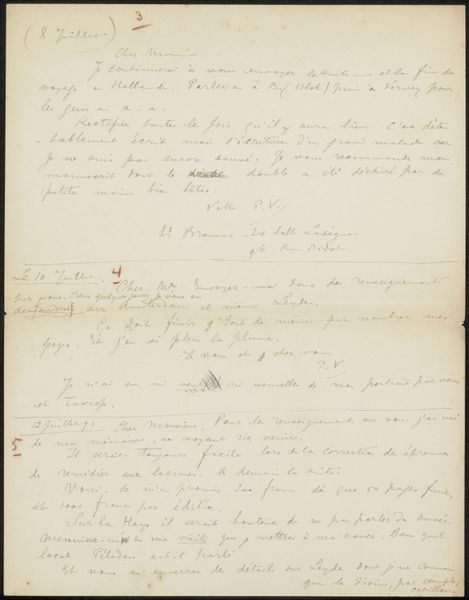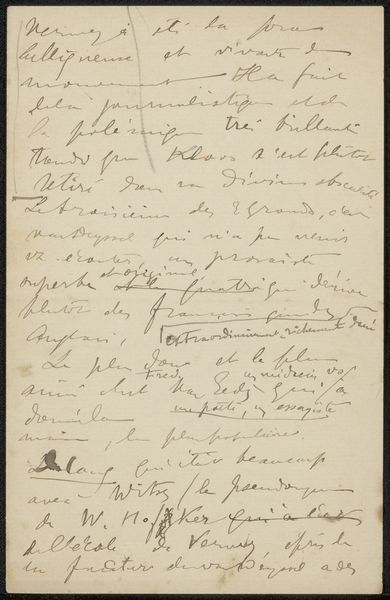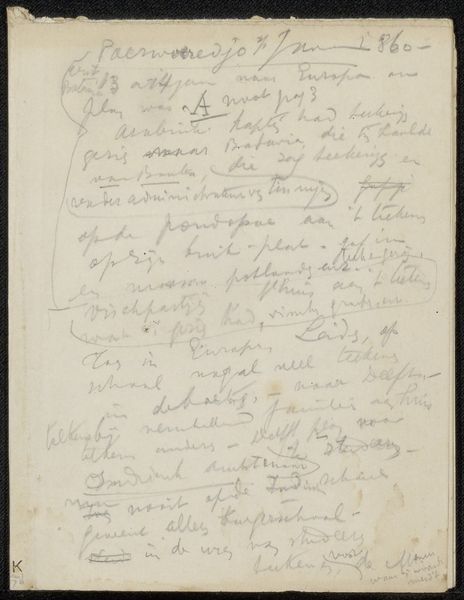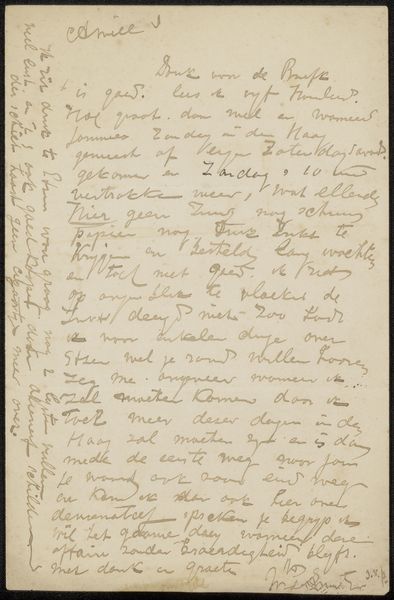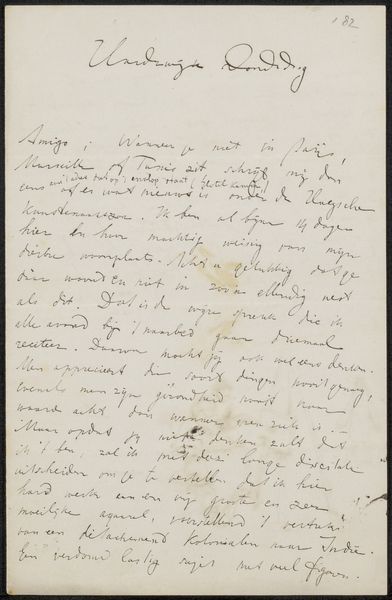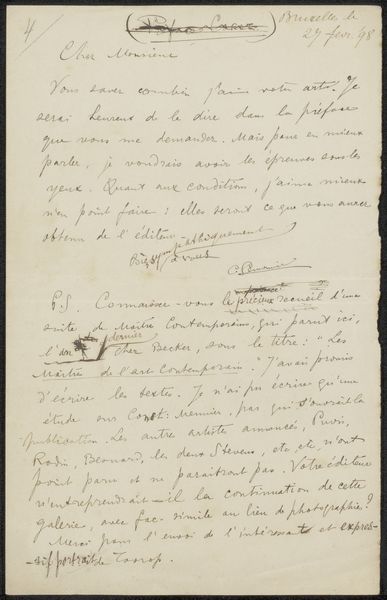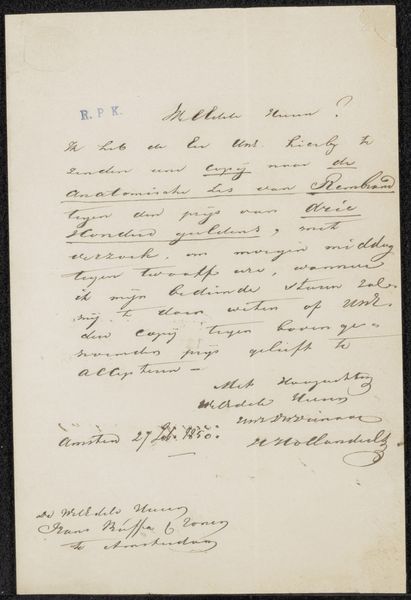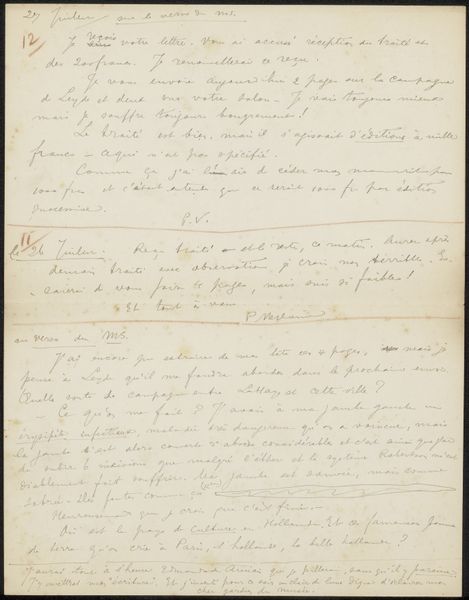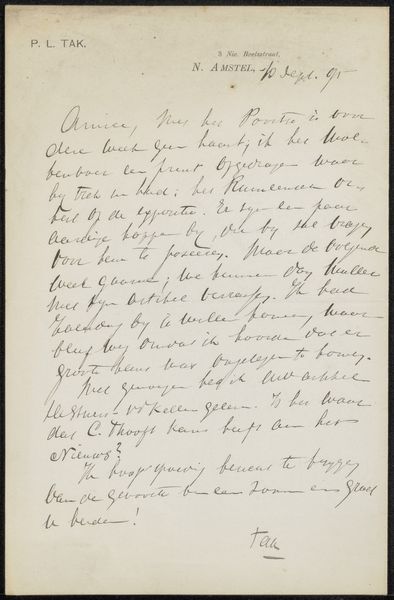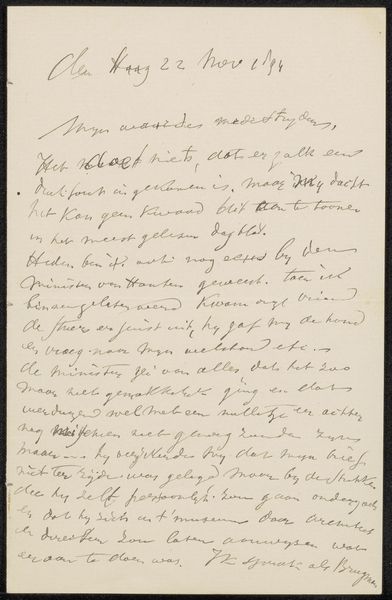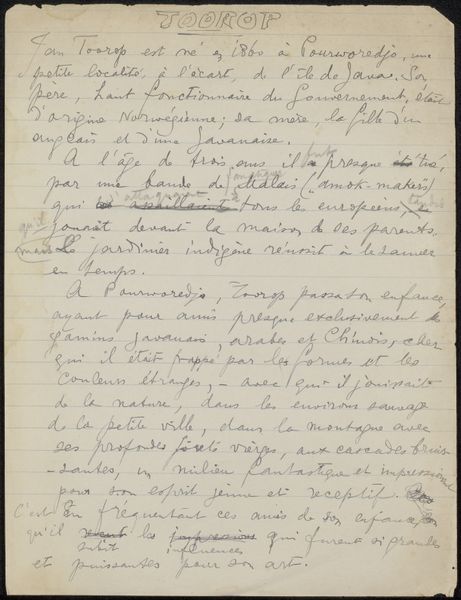
drawing, paper, ink, pencil
#
portrait
#
drawing
#
paper
#
ink
#
pencil
Copyright: Rijks Museum: Open Domain
Curator: This is an intriguing piece from the Rijksmuseum's collection: a letter titled "Brief aan Elsie Maud Cownie," likely penned around 1906 by Philip Zilcken. It's a drawing, of sorts, rendered in pencil and ink on paper. The raw emotion practically vibrates off the page. What's your first impression? Editor: Frailty. The script seems delicate, almost hesitant, and that combined with the cream paper evokes a feeling of something very personal, very intimate. Like holding someone's whispered thoughts. The letterform itself feels fragile and evanescent like holding someone's breath. Curator: That fragility is interesting. The ink definitely gives the writing permanence, but there's also a sketchiness to the pencil marks that feels transient. Notice the rhythm of the writing, like a score. He speaks of Renée traveling with her grandmother and frets over Elsie and her family arriving safely. We are in the middle of something important but have missed all the setup and background. Editor: Absolutely. The letter is replete with hidden worlds. And what I find interesting here is the use of location: the very physical and spatial anxiety around "traveling." This suggests a symbolic journey. The fear, and intimacy, here seem larger. This is far more than a social script about someone taking care during the journey. Curator: He’s asking Elsie to give the conductor a "tip," an explicit acknowledgement of social norms, like a financial "thank you" to ward off bad karma, or as insurance to get a traveler somewhere safe. And the location and tone feel at once casual and slightly urgent; Arles, June 1st at 11 o'clock, he emphasizes time, place, like it is extremely important for some purpose. This must be related to all these spatial details and journeys. Editor: Yes, the cultural encoding of "traveling" is an old trick used by oracles and diviners of all sorts to suggest that things and people in transit are somehow vulnerable. But he adds "because we are anxious..." This clearly carries not just anxiety but also deeper significance and more weight. A message that needs relaying at great personal risk. Curator: I read your observations slightly differently. To me, it's the very tangible reality of travel in the early 20th century that fuels that anxiety. No phones, limited infrastructure... it all points to an emphasis on the material over any "spiritual" consideration. Editor: Perhaps. But, again, consider his deliberate location details. If these spatial anxieties were simply quotidian concerns, then why express them using geographical and locational language so deliberately? Curator: Fair point. Ultimately, whatever drove Zilcken to pick up that pen, the intersection of fragility, anxiety, and the spatial, makes for a rather haunting glimpse into a private moment. Editor: Precisely. It speaks volumes about a bygone era, about hidden anxieties and a reliance on trust and community to keep one another safe when undertaking vulnerable trips, a very fragile form of connection indeed.
Comments
No comments
Be the first to comment and join the conversation on the ultimate creative platform.
